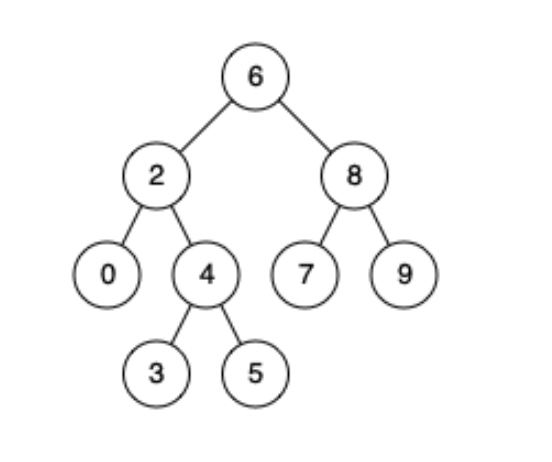In graph theory and computer science, the lowest common ancestor (LCA) of two nodes is the lowest node that has both of them as descendants.
Here is an example, given a Binary Search Tree:

|
What’s Binary search tree
Binary search tree have two properties:
- The value of right child is greater than node’s value
- The value of left child is less than node’s value
Approach #1: Recursive Algorithm
If we traverse each node of binary search tree and comparing the values of p , q and current node’s value, there are four scenarios:
- current node is NULL, we will return NULL as result
- root’s value is in the range of values of
pandq, root is the lowest common ancestor
- root’s value is less than
pandq, then lowest common ancestor will be in the left subtree
root’s value is greater than
pandq, then the lowest common ancestor will be the right subtree.Time Complexity: O(N)
Space Complexity: O(N) for recursion stack.
class Solution {
public:
TreeNode* lowestCommonAncestor(TreeNode* root, TreeNode* p, TreeNode* q) {
if(root == NULL || p == NULL || q == NULL)
return NULL; // scenario #1
if((p->val <= root->val && root->val <= q->val) ||
(p->val >= root->val && root->val >= q->val))
return root; // scenario #2
if(p->val < root->val && q->val < root->val) {
return lowestCommonAncestor(root->left, p, q); // scenario #3
}
if(p->val > root->val && q->val > root->val) {
return lowestCommonAncestor(root->right, p, q); // scenario #4
}
return NULL;
}
};
Approach #2: Iterative Algorithm
Iterative algorithm works similarly to the recursive algorithm, but we don’t need a stack to backtrace search. In fact, we only need to find the first node, which p and q begin to split, one of them is in this node’s left subtree, and the other is in the right subtree.
This algorithm is somehow similar to binary search.
Time Complexity: O(N)
Space Complexity: O(1)
|
When the tree is not a binary search tree, but only a binary tree. The solution would be more complex. Please refer to Lowest Common Ancestor Of A Binary Tree.
Join my Email List for more insights, It's Free!😋
